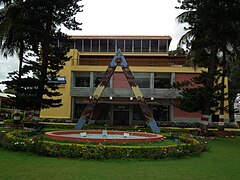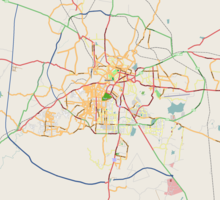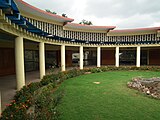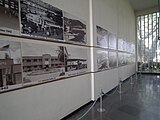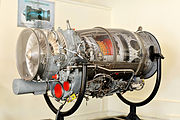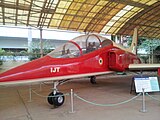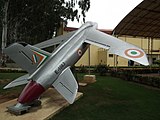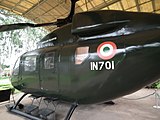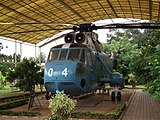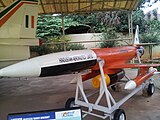
Hindustan Aeronautics Limited (HAL) is an Indian state-owned aerospace and defence company, headquartered in Bangalore (Bengaluru), India. It is governed under the management of the Indian Ministry of Defence. The government-owned corporation is primarily involved in the operations of the aerospace and is currently involved in the design, fabrication and assembly of aircraft, jet engines, helicopters and their spare parts.

The BAE Systems Hawk is a British single-engine, jet-powered advanced trainer aircraft. It was first flown at Dunsfold, Surrey, in 1974 as the Hawker Siddeley Hawk, and subsequently produced by its successor companies, British Aerospace and BAE Systems. It has been used in a training capacity and as a low-cost combat aircraft.
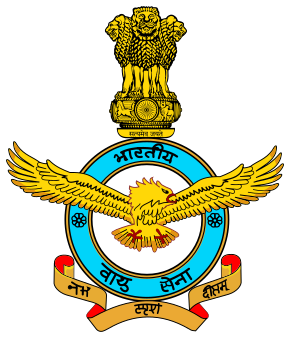
The Indian Air Force (IAF) is the air arm of the Indian Armed Forces. Its complement of personnel and aircraft assets ranks fourth amongst the air forces of the world. Its primary mission is to secure Indian airspace and to conduct aerial warfare during armed conflict. It was officially established on 8 October 1932 as an auxiliary air force of the British Empire which honoured India's aviation service during World War II with the prefix Royal. After India gained independence from the United Kingdom in 1947, the name Royal Indian Air Force was kept and served in the name of Dominion of India. With the government's transition to a Republic in 1950, the prefix Royal was removed.

The HAL Tejas is an Indian single-engine, fourth-generation, multirole light fighter designed by the Aeronautical Development Agency (ADA) in collaboration with Aircraft Research and Design Centre (ARDC) of Hindustan Aeronautics Limited (HAL) for the Indian Air Force and Indian Navy. It came from the Light Combat Aircraft (LCA) programme, which began in the 1980s to replace India's ageing MiG-21 fighters. In 2003, the LCA was officially named "Tejas".
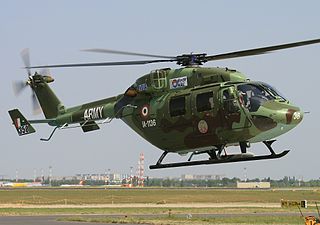
The HAL Dhruv is a utility helicopter designed and developed by Hindustan Aeronautics Limited (HAL). The development of HAL Dhruv was announced in November 1984. The helicopter first flew in 1992; however, its development was prolonged due to multiple factors including the Indian Army's requirement for design changes, budget restrictions, and sanctions placed on India following the 1998 Pokhran-II nuclear tests. The name comes from a Sanskrit origin word dhruv which means unshakeable or firm.

The HAL HJT-36 Sitara is a subsonic intermediate jet trainer aircraft is design and developed by Aircraft Research and Design Centre (ARDC) and built by Hindustan Aeronautics Limited (HAL) for the Indian Air Force and the Indian Navy. The HJT-36 will replace the HAL HJT-16 Kiran as the Stage-2 trainer for the two forces.

HAL Airport, also known as Hindustan Airport, is an airport located in Bangalore, Karnataka, India. Due to its location in the heart of the city, it used to serve as a hub for general, business and VIP aviation, as well as being used by the Indian Air Force as a cargo and logistics base, and as a testing facility by Hindustan Aeronautics Limited. It served as the city's main domestic and international airport until 24 May 2008, when it was replaced by the new, much larger Kempegowda International Airport in Devanahalli. There have since been repeated attempts to restart commercial service at the airport, but as of 2015 was being used only for non-scheduled, military cargo/logistics, VIP aircraft movements, and as a diversion alternative to Kempegowda International Airport in case of emergencies.

Aero India is a biennial air show and aviation exhibition held in Bengaluru, India at the Yelahanka Air Force Station. It is organised by the Defence Exhibition Organisation, Ministry of Defence.

The HAL HJT-16 Kiran is an Indian two-seat intermediate jet-powered trainer aircraft designed and manufactured by aircraft company Hindustan Aeronautics Limited (HAL).
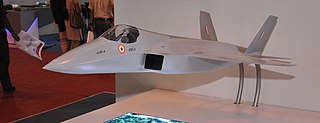
The HAL-DRDOAdvanced Medium Combat Aircraft (AMCA) is an Indian programme to develop fifth and sixth-generation fighter aircrafts. It is expected to be produced by a public-private joint venture between the Defence Research and Development Organisation, Hindustan Aeronautics Limited, and an Indian private company. The programme has an aim to start production by 2027 or 2028.

The Bristol Siddeley Orpheus was a single-spool turbojet developed by Bristol Siddeley for various light fighter/trainer applications such as the Folland Gnat and the Fiat G.91. Later, the Orpheus formed the core of the first Bristol Pegasus vectored thrust turbofan used in the Harrier Jump Jet family.
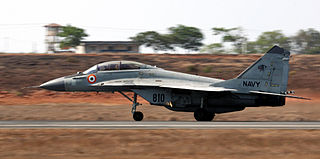
The Indian Naval Air Arm is the aviation branch and a fighting arm of the Indian Navy which is tasked to provide an aircraft carrier based strike capability, fleet air defence, maritime reconnaissance, and anti-submarine warfare.

The HAL Light Utility Helicopter (LUH) along with its derivative Light Observation Helicopter (LOH) is design and developed by Rotary Wing Research and Design Center (RWR&DC) one of the R&D sections of Hindustan Aeronautics Limited (HAL) for civilian and military applications. They are set to replace older under licensed HAL built versions of Aérospatiale SA 315B Lama and Aérospatiale Alouette III in service with Indian Army and Indian Air Force.
The Indian Air Force has been undergoing a modernization program to replace and upgrade its aging and outdated equipment since the late 90s to modern standards. For that reason it has started procuring and developing aircraft, weapons, associated technologies, and infrastructures. Some of these programs date back to the late 80s. The primary focus of current modernization and upgrades is to replace aircraft purchased from the Soviet Union that currently form the backbone of the Air Force.

The HAL HTT-40 is an Indian training aircraft, designed and built by Hindustan Aeronautics Limited (HAL). It will replace the Indian Air Force's retired HPT-32 Deepak as a basic trainer.

The Indian Air Force Test Pilot School is a unit of the Indian Air Force (IAF) that evaluates aircraft and systems for induction into user organisations. Most new aircraft types and major airborne systems must have ASTE's stamp of approval to be considered fit for service in India. While many countries have testing facilities of one kind or the other, training of flight test personnel is not often imparted in them. ASTE's Air Force Test Pilots School (AFTPS) is only the fifth such institution in the world.
Chandrathil Gouri Krishnadas Nair is an Indian technocrat, teacher and metallurgical scientist known for his contributions in the field of aeronautical metallurgy. Dr Nair was given the Padma Shri Award by the Government of India for his contributions to science and technology in 2001.

Vishnu Madav Ghatage (1908–1991) was an Indian aeronautical engineer, known for his pioneering conceptual and engineering contributions to Indian aeronautics. He led the team which designed and developed HAL HT-2, the first Indian designed and built aircraft. He was honoured by the Government of India in 1965, with the award of Padma Shri, the fourth highest Indian civilian award for his services to the nation.

The HAL Tejas MK.2, or Medium Weight Fighter (MWF), is a planned single-engine, delta wing, multirole fighter designed by the Aeronautical Development Agency (ADA) in collaboration with Aircraft Research and Design Centre (ARDC) of Hindustan Aeronautics Limited (HAL) for the Indian Air Force (IAF). It is a further development of the HAL Tejas, or Light Combat Aircraft (LCA), programme which began in the 1980s to replace India's ageing MiG-21 fighters. The Tejas Mk 2 is being designed to replace multiple strikefighters like the SEPECAT Jaguar, Dassault Mirage 2000 and MiG-29 that the Indian Air Force currently operates.
